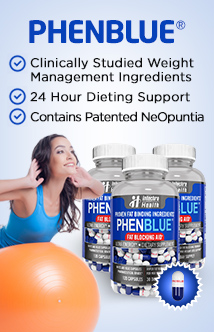Blood Pressure Diet
- Hits: 5583
Diseases of the heart and blood vessels are the major cause of death in North America. High blood pressure (hypertension) is an important predictor of these diseases. This is why it's important to lower raised blood pressure. In May 2003, new guidelines for managing and treating high blood pressure (hypertension) were issued by the National Heart Lung and Blood Institutes. Due to new evidence about increased risk of cardiovascular disease (CVD), those with blood pressure greater than 120/80 and below 140/90 are considered prehypertensive and are encouraged to make major lifestyle changes to reduce their risk of developing high blood pressure and cardiovascular disease.
Diet is One Factor in Lowering Blood Pressure
As well as diet, maintaining a healthy weight, taking regular physical exercise and moderate consumption of alcohol are all important factors in reducing blood pressure, but maintaining a proper diet is probably the foremost.
Blood Pressure Diet and Reducing Sodium Intake
Reducing the amount of sodium in your diet can help to reduce blood pressure levels. Sodium is essential for good health, but on average American adults consume 4,000 to 6,000 milligrams daily. This compares with the recommended daily limit for sodium (for most people) of only 2,400 milligrams per day. And it's easy to eat too much sodium - for example, one teaspoon of salt contains a massive 2,300 milligrams of sodium! Furthermore, many processed foods (soups, sauces and stock) have a high sodium content.
Blood Pressure Diet Guidelines to Reduce High Blood Pressure
Check Nutrition Facts on Food Labels for Sodium Content - Choose foods labeled low-sodium, very low sodium, or salt-free. For example, beware any ingredient with the word sodium in it, such as disodium phosphate, monosodium glutamate (MSG), sodium benzoate, sodium hydroxide, sodium nitrite, sodium proprionate, and sodium sulfate. Typically, these words indicate a high sodium content.
Reduce Consumption of High-Sodium Processed Foods - For example, cured and smoked meats, many canned soups, stock/bouillion cubes and condiments.
Stop Adding Salt to Foods - Cook with more herbs and spices, and less salt. Don't have salt on the table when eating. (Warning: if taking medication for high blood pressure, such as diuretics, see your doctor before using salt substitutes.)
Eat More Potassium-Rich Foods - Potassium works alongside sodium to regulate blood pressure. Studies show that people who consume more potassium have lower blood pressure. Good sources of potassium include many fruits, such as: cantaloupe, bananas, oranges/ orange juice and watermelon. Choose vegetables like: potatoes, spinach, and zucchini.
Blood Pressure Diet to Lower Blood Pressure
The American Heart Association and U.S. government recommend the Dietary Approaches to Stop Hypertension (DASH) diet as a way to lower blood pressure without taking drugs.
Other Methods to Reduce Blood Pressure Apart from Diet
According to blood pressure guidelines issued by the National Heart Lung and Blood Institutes, other ways of controlling and reducing blood pressure include:
- Maintaining a Healthy Body Weight - If you are overweight, even a modest weight loss can significantly improve high blood pressure
- Taking Regular Exercise - Regular physical exercise is very important in helping to control elevated blood pressure. But always consult a doctor before embarking on an exercise program.
- Drinking Alcohol in Moderation - Drinking excessive alcohol raises blood pressure. It is recommended that people with high blood pressure limit alcohol consumption to no more than one ounce per day. This is roughly two ounces of 100-proof whiskey, one eight-ounce glass of wine, or two 12-ounce cans of beer.














